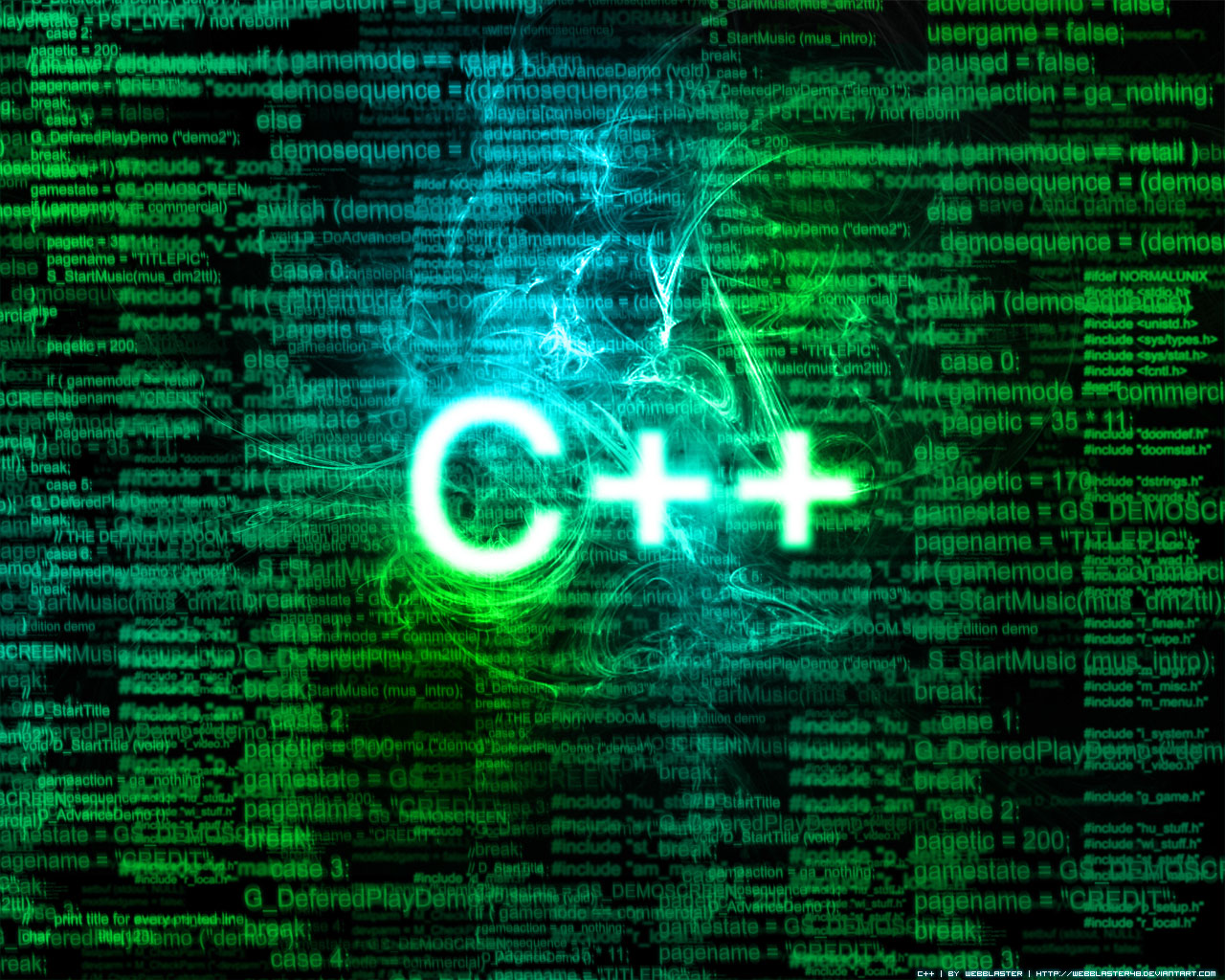Pointer
C++ Memory Map
Once a program is compiled, C++ creates four logically distinct regions of memory:
Code Area : Area to hold the compiled program code
Data Area : Area to hold global variables
Stack Area : Area to hold the return address of function calls, argument passed to the functions, local variables for functions and the current state of the CPU.
Heap : Area from which the memory is dynamically allocated to the program.
Accessing address of a variable
Computer’s memory is organized as a linear collection of bytes. Every byte in the computer’s memory has an address. Each variable in program is stored at a unique address. We can use address operator & to get address of a variable:
int num = 23;
cout << # // prints address in hexadecimal
POINTER
A pointer is a variable that holds a memory address, usually the location of another variable in memory.
Defining a Pointer Variable
int *iptr;
iptr can hold the address of an int
Pointer Variables Assignment:
int num = 25;
int *iptr;
iptr = #
Memory layout
To access num using iptr and indirection operator *
cout << iptr; // prints 0x4a00
cout << *itptr; // prints 25
Similary, following declaration shows:
char *cptr;
float *fptr;
cptr is a pointer to character and fptr is a pointer to float value.
Pointer Arithmetic
Some arithmetic operators can be used with pointers:
- Increment and decrement operators ++, --
- Integers can be added to or subtracted from
pointers using the operators +, -, +=, and -=
Each time a pointer is incremented by 1, it points to the memory location of the next element of its base type.
If “p” is a character pointer then “p++” will increment “p” by 1 byte.
If “p” were an integer pointer its value on “p++” would be incremented by 2 bytes.
Pointers and Arrays
Array name is base address of array
int vals[] = {4, 7, 11};
cout << vals; // displays 0x4a00
cout << vals[0]; // displays 4
Lets takes an example:
int arr[]={4,7,11};
int *ptr = arr;
What is ptr + 1?
It means (address in ptr) + (1 * size of an int)
cout << *(ptr+1); // displays 7
cout << *(ptr+2); // displays 11
Array Access
Array notation arr[i] is equivalent to the pointer notation *(arr + i)
Assume the variable definitions
int arr[]={4,7,11};
int *ptr = arr;
Examples of use of ++ and --
ptr++; // points at 7
ptr--; // now points at 4
Character Pointers and Strings
Initialize to a character string.
char* a = “Hello”;
a is pointer to the memory location where ‘H’ is stored. Here “a” can be viewed as a character array of size 6, the only difference being that a can be reassigned another memory location.
char* a = “Hello”;
a gives address of ‘H’
*a gives ‘H’
a[0] gives ‘H’
a++ gives address of ‘e’
*a++ gives ‘e’
Pointers as Function Parameters
A pointer can be a parameter. It works like a reference parameter to allow change to argument from within function
Pointers as Function Parameters
void swap(int *x, int *y)
{
int temp;
temp = *x;
*x = *y;
*y = temp;
}
swap(&num1, &num2);
Pointers to Constants and Constant Pointers
Pointer to a constant: cannot change the value that is pointed at
Constant pointer: address in pointer cannot change once pointer is initialized
Pointers to Structures
We can create pointers to structure variables
struct Student {int rollno; float fees;};
Student stu1;
Student *stuPtr = &stu1;
(*stuPtr).rollno= 104;
-or-
Use the form ptr->member:
stuPtr->rollno = 104;
Static allocation of memory
In the static memory allocation, the amount of memory to be allocated is predicted and preknown. This memory is allocated during the compilation itself. All the declared variables declared normally, are allocated memory statically.
Dynamic allocation of memory
In the dynamic memory allocation, the amount of memory to be allocated is not known. This memory is allocated during run-time as and when required. The memory is dynamically allocated using new operator.
Free store
Free store is a pool of unallocated heap memory given to a program that is used by the program for dynamic allocation during execution.
Dynamic Memory Allocation
We can allocate storage for a variable while program is running by using new operator
To allocate memory of type integer
int *iptr=new int;
To allocate array
double *dptr = new double[25];
To allocate dynamic structure variables or objects
Student sptr = new Student; //Student is tag name of structure
Releasing Dynamic Memory
Use delete to free dynamic memory
delete iptr;
To free dynamic array memory
delete [] dptr;
To free dynamic structure
delete Student;
Memory Leak
If the objects, that are allocated memory dynamically, are not deleted using delete, the memory block remains occupied even at the end of the program. Such memory blocks are known as orphaned memory blocks. These orphaned memory blocks when increase in number, bring adverse effect on the system. This situation is called memory leak
Self Referential Structure
The self referential structures are structures that include an element that is a pointer to another structure of the same type.
struct node
{
int data;
node* next;
}






